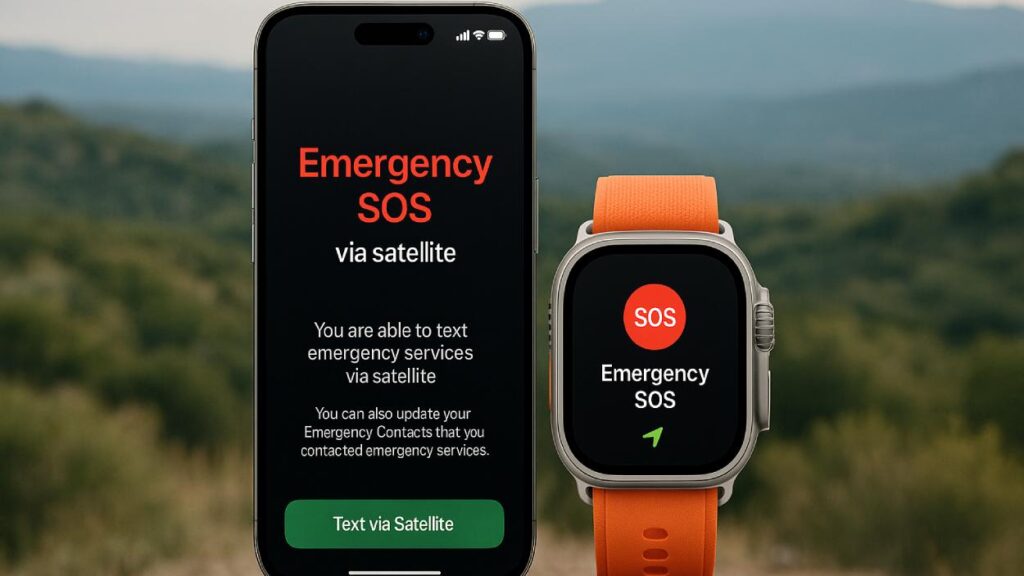Apple is bringing its Emergency SOS via satellite feature to Mexico, offering iPhone and Apple Watch Ultra users critical access to emergency services even without cell or Wi-Fi coverage.
TLDR:
- Apple confirms Emergency SOS via satellite is launching in Mexico later this year
- Feature allows iPhone and Apple Watch users to contact help without cellular or Wi-Fi
- Free for two years on supported devices, with recent extension to 2026
- Mexico joins a growing list of countries adopting Apple’s satellite-based safety tech
What Happened?
Apple announced that Emergency SOS via satellite will become available in Mexico later this year for compatible iPhone and Apple Watch models. The feature enables users to contact emergency services and notify loved ones even when they are out of traditional network coverage. Since launching in 2022 with the iPhone 14, it has been credited with saving lives in remote or dangerous situations.
Apple launching Emergency SOS via satellite feature in Mexico later this year https://t.co/ylM9FNVpsa by @ChanceHMiller
— 9to5Mac (@9to5mac) October 8, 2025
Expanding Safety Tech to More Users
Emergency SOS via satellite will be available on iPhone 14 or later models and the Apple Watch Ultra 3. Apple confirmed that users in Mexico will now be able to access this feature, along with Find My via satellite and Messages via satellite, which are already active in the country.
When users find themselves in an area without network service and attempt to call or text emergency services, their device initiates a satellite connection. A brief questionnaire appears to collect essential information, and on-screen guidance helps them aim their device toward a satellite. Messages are routed through a relay center, where Apple-trained specialists contact emergency responders on the user’s behalf.
Key points:
- The feature was first introduced in 2022 with the iPhone 14.
- It has already helped in real-life rescue situations, such as hikers in U.S. national parks.
- Mexico will be the next region to benefit from this technology, following countries like the U.S., U.K., Japan, Canada, Australia, and many others.
Strategic Expansion and Market Relevance
Apple’s move into Mexico highlights its focus on emerging markets with infrastructure challenges, especially in remote or rural areas. By bringing satellite connectivity to these regions, Apple is not only enhancing safety but also strengthening its brand appeal in areas where other smartphone makers are competing aggressively.
According to industry experts, this expansion aligns with Apple’s broader goals to lead in personal safety technology and drive device adoption in Latin America. The inclusion of roadside assistance and location sharing adds further functionality that appeals to users in areas prone to seismic activity or with limited emergency resources.
Behind the Technology
Emergency SOS via satellite is made possible through advanced hardware and software integration. iPhones and Apple Watches use custom antennas to connect with low-Earth orbit satellites. The device compresses messages for faster transmission and provides users with a demo mode to practice without triggering real alerts.
The feature depends on backend coordination with local emergency services, which Apple is setting up with Mexican authorities to ensure a seamless response process.
Competing in the Satellite Connectivity Space
Apple’s consistent rollout and success stories set it apart from Android-based efforts. For instance, Qualcomm’s satellite ambitions faced hurdles due to poor adoption. In contrast, Apple’s version has been widely embraced for its usability and reliability.
This expansion could pave the way for further launches in Latin America, and possibly even full satellite messaging or internet access in the future. With competitors like Samsung and services like Starlink also expanding, Apple’s early mover advantage gives it a distinct lead in this space.
What TechKV Thinks?
I think this is a smart and genuinely impactful move by Apple. Emergency SOS via satellite is more than just a tech gimmick, it’s a real-world feature that can save lives, especially in countries like Mexico where connectivity gaps are a serious issue. Apple is doing what few companies can do well: blending hardware innovation, software polish, and real-world utility into one seamless experience.
The free two-year service extension until 2026 shows Apple’s commitment to accessibility, but it also raises questions about long-term pricing. Still, even as a premium feature, it’s one that adds serious value. If you’re in a remote area or ever face an emergency, this could make all the difference.
